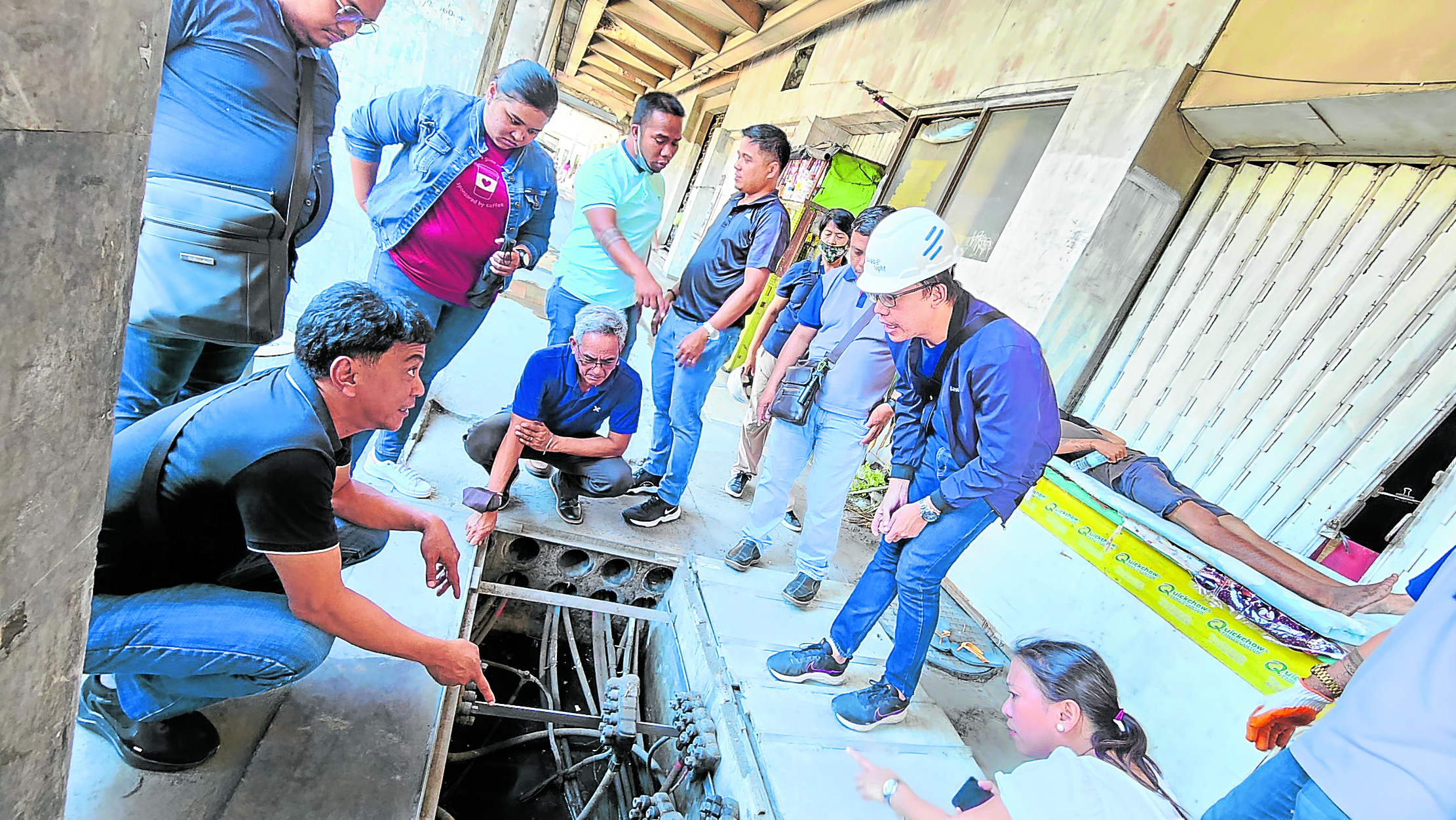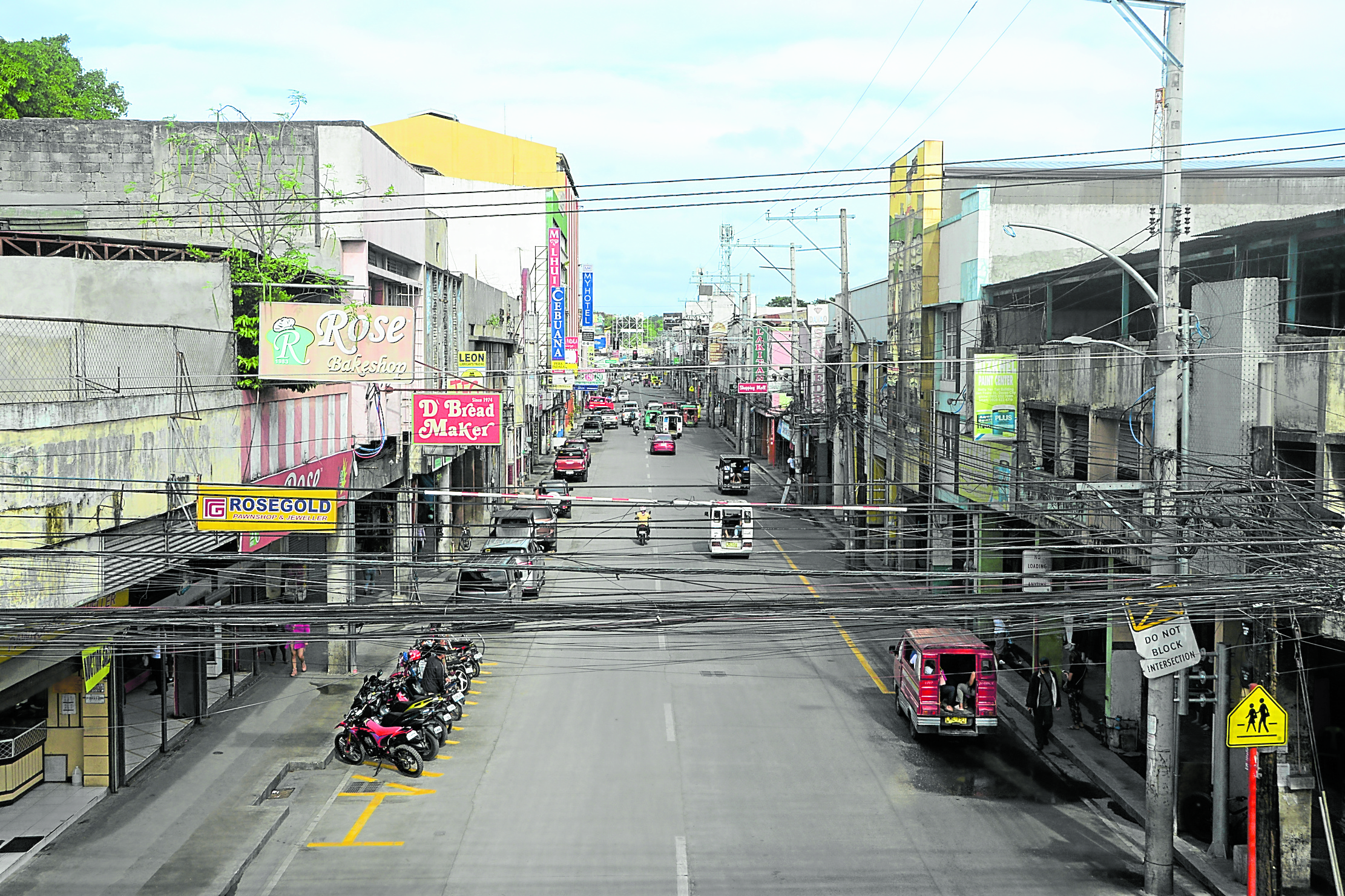Davao Light powers continuing growth of city’s vibrant economy

BENCHMARK Officials from Zamboanga Peninsula Polytechnic State University visit Davao City to see the underground cabling project. They plan to implement the same project on their university campus. —PHOTO FROM ABOITIZ POWER
Along the stretch of CM Recto Avenue in Davao City, the skies are clearly visible.
Unlike the busy streets of Metro Manila, overhead electrical wires are nowhere to be found, and yet power is available for Davaoeños.
This, according to Davao Light and Power Co. chief operating officer Rodger Velasco, was one of the Aboitiz-led company’s biggest achievements since it was incorporated in 1929.
“The underground distribution system (UDS) is making a lot of noise in the Philippines. We’ve been visited by around 10 utilities and local government units (LGUs) just to benchmark how we did our UDS successfully,” Velasco tells the Inquirer.
Since the UDS project’s implementation in 2017, Davao Light has so far completed the conversion of two kilometers of overhead power lines into underground electric cables.
Article continues after this advertisementThis is around 25 percent of the total 7.5-km project area. It is also part of the company’s compliance with a 2017 city ordinance that required Davao Light and telecommunication companies to implement the Davao City underground cabling plan that covers CM Recto; the streets of San Pedro, C. Bangoy Sr., Bonifacio, Pelayo, and E. Quirino; and R. Magsaysay Avenue.
Article continues after this advertisementDavao Light is currently at the third phase of the project, which covers R. Magsaysay, and aims to complete the entire stretch by the first quarter of 2025.
Transferring these cables along the so-called Kadayawan route underground is one of the reasons why Davao Light’s customers were satisfied with power services more than 90 percent of the time, says Velasco.
Kadayawan, the city’s annual thanksgiving festival, draws thousands of tourists every year and the streets are often filled with festive decorations meant to attract more visitors.
Without the cables blocking their view, Davaoeños and tourists alike are able to better enjoy street performances and festivities.
Ensuring economic growth
As a member of the Davao City Chamber of Commerce and Industry Inc. (DCCCII), Davao Light sees ensuring the economic growth of the city as one of its priorities.
“We know for a fact that Davao City is growing, and of course including the areas we serve in the north,” Velasco shares. Apart from Davao City, part of his company’s 3,600-square-kilometer service area are Panabo City in Davao del Norte, and the municipalities of Carmen, Braulio Dujali and Santo Tomas.
“Our main shared vision is making Davao City a viable city for investment. The chamber always talks about how people should come to Davao because we have reliable, safe, and reasonable cost of power,” Velasco, DCCCII board of trustees chair, adds.
The UDS project was originally set for completion in 2020 as required by City Ordinance No. 0152-17, but Velasco notes that implementation was not without its challenges.
On average, it takes two to two and a half years to transfer one kilometer of overhead power lines due mainly to right-of-way negotiations.
For one, some business owners tended to resist the change, but Velasco cites Davao Light’s good working relationship both with Davaoeños and the local government as the “secret sauce” to success.
“Without them, we cannot compel the rest of the overhead utilities to go underground. There are a lot of utilities attempting to do that … but without the support of the LGUs to manage, I don’t think we would be successful,” he says.

UNDERGROUND CABLING Davao Light and Power Co. has been transferring overhead power lines underground in Davao City since 2017, alleviating visual obstructions from the so-called Kadayawan route. The company aims to convert 7.5 kilometers of power lines into underground cables by 2029 in compliance with a city ordinance. —PHOTO FROM ABOITIZ POWER
100% sitio electrification
Within Davao Light’s franchise area are thousands of sitios in need of power.
According to Velasco, the company has so far achieved 99.45-percent electrification. By the end of the year, this will be at 99.6 percent.
Davao Light aims to earmark P2.9 billion in capital expenditures next year, and the plan is to have 100-percent electrification by 2024.
“Sitios are dynamic because as the population grows, the barangay expands, and a new sitio is created … Based on statistics given by barangays, we will be serving 100 percent by next year,” Velasco adds.
Digital transformation
Davao also prides itself in its digital transformation, primarily through the availability of online applications for billing and business permits.
On the part of Davao Light, Velasco notes that the company has been utilizing artificial intelligence since 2010 to improve power reliability and efficiency within its franchise area.
The award-winning Project AI CU (artificial intelligence compatible unit) is what Velasco calls the brainchild of one of Davao Light’s engineers that has also been adopted by Aboitiz Power Corp. distribution utility Visayan Electric Co. Inc.
The project has lifted 1,500 man hours off the shoulders of the company’s employees. Prior to the project, trained engineers needed to leave their homes and offices to personally assess each electrical installation.
AI CU utilizes AI to optically scan images of electrical installation assets to see whether these are aligned with the records of a distribution utility, function properly, and predict whether a maintenance issue will happen in three years.
“Overall, verifying the accuracy of records ensures regulatory compliance, better asset management, operational efficiency and the continued trust that a distribution utility can deliver justified and cost-effective electricity prices in its franchise area,” AboitizPower said in an earlier statement.
Velasco adds: “We will be soon projecting that there will no longer be electrical poles knocked down or damaged because of the lack of maintenance. AI will take care of that.”
There is still much work to be done for the benefit of Davaoeños, but Davao Light is not deterred by the daunting task.
“Our long-term vision is a massive transformative purpose. Within the Aboitiz distribution utilities, we empower the evolution of our cities, including our municipalities,” Velasco says.